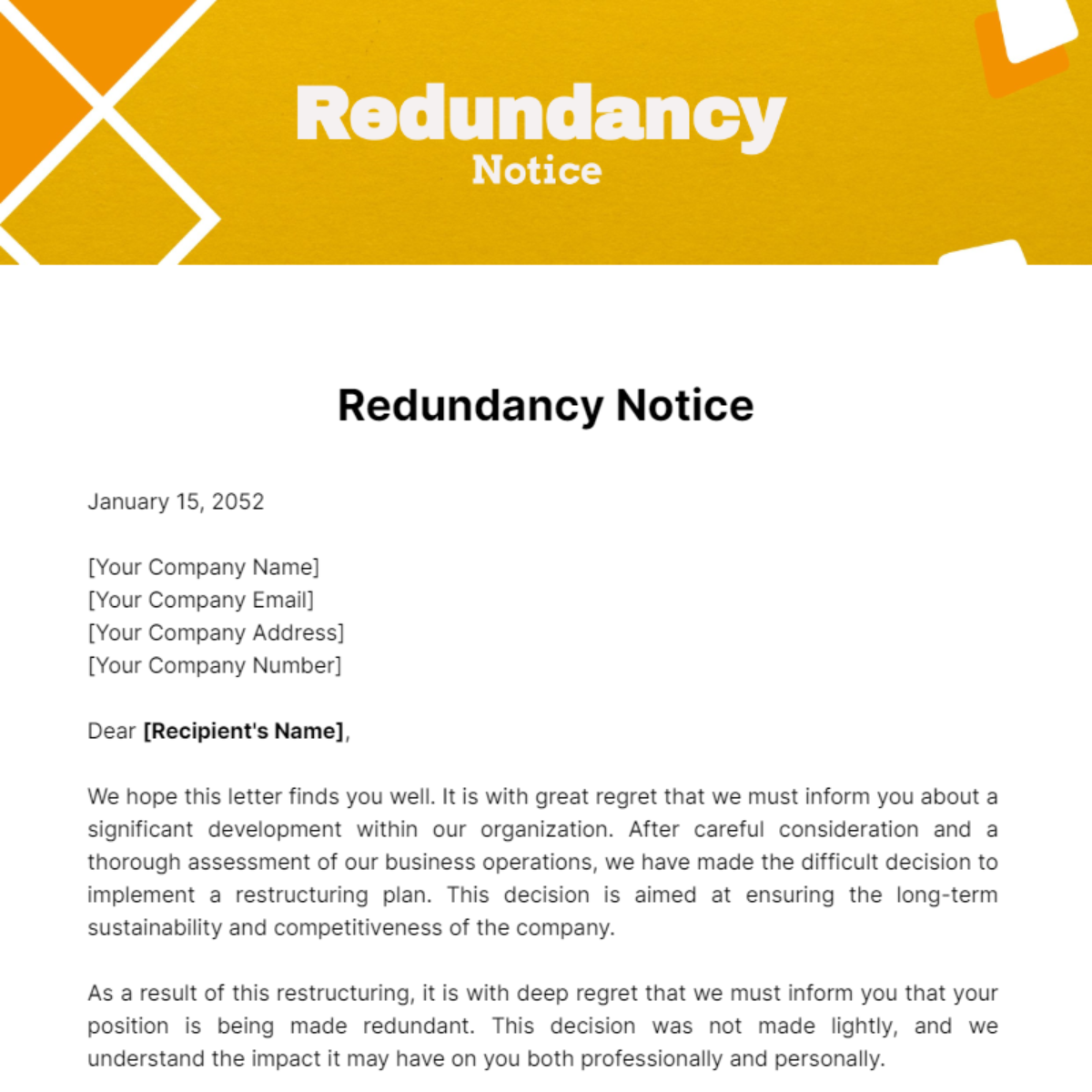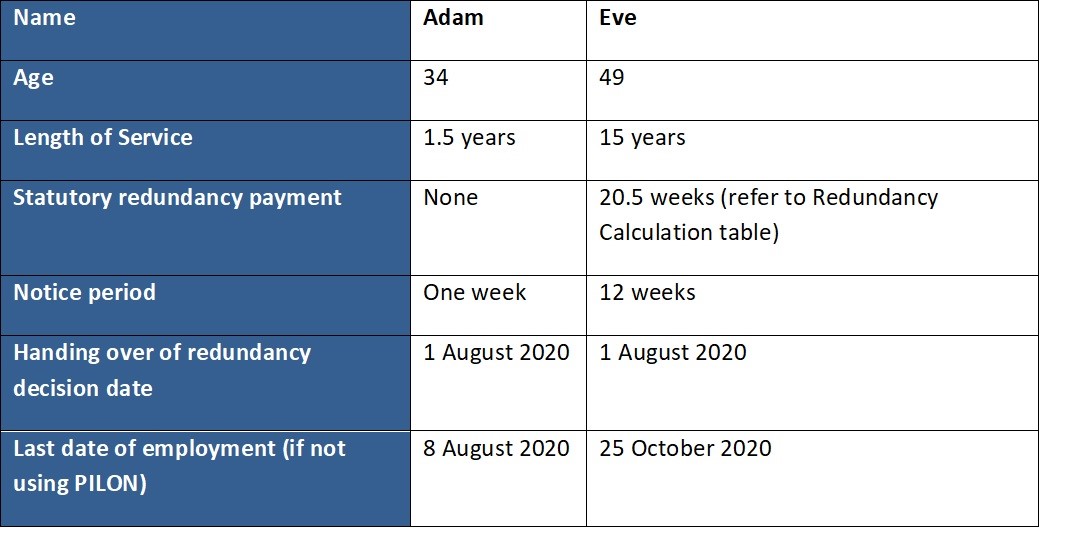Your Rights to Redundancy If Company Goes Bust: UK Employee Protections
Checking Out the Interplay Between Firm Redundancy and Organizational Flexibility for Future Growth
In the dynamic landscape these days's business globe, the elaborate partnership in between business redundancy and business adaptability becomes a vital factor for continual development and success. Business usually deal with the obstacle of striking a delicate equilibrium between preserving a degree of redundancy to minimize dangers and fostering versatility to react swiftly to the ever-evolving market needs. This fragile interplay holds the crucial to not only surviving in stormy times however additionally thriving despite uncertainty. As we discover the diverse measurements of this interplay, appealing understandings right into how organizations browse these intricacies to pave the method for future development wait for.
Significance of Business Redundancy
Business redundancy is an important aspect that improves business resilience and reduces functional threats. By including redundancy actions within the business structure, business can better withstand unexpected disruptions and fluctuations in the company environment. Redundancy works as a strategic barrier, permitting business to adjust and respond efficiently to unexpected challenges without endangering crucial procedures.
One secret aspect of the relevance of firm redundancy is its duty in making certain connection during times of crisis. When confronted with unexpected changes or emergency situations, repetitive systems, resources, or employees can action in to maintain essential features and stop extensive disruptions. This connection not only safeguards the company's online reputation and client count on yet likewise minimizes economic losses and functional downtime.

Techniques for Business Versatility

An additional essential method is purchasing modern technology and framework that can support adaptability and scalability. Executing digital devices, automation, and information analytics can simplify procedures, boost efficiency, and provide beneficial insights for informed decision-making. Moreover, creating adaptable organizational structures that enable fast changes to market characteristics and consumer needs is crucial for staying competitive in a rapidly evolving environment. By proactively identifying possible disturbances and possibilities, companies can proactively adapt and flourish in an ever-changing organization landscape.
Balancing Redundancy and Adaptability
Attaining a harmonious equilibrium in between operational redundancy and business versatility is extremely important in navigating the intricacies of a dynamic company environment. Redundancy within a firm offers More Help a safeguard, making certain connection and stability in procedures. Nevertheless, an excess of redundancy can cause ineffectiveness and prevent versatility to transforming market conditions. On the various other hand, organizational adaptability allows firms to react without delay to exterior interruptions and confiscate new opportunities. Striking the ideal balance between redundancy and flexibility is a delicate process that calls for a deep understanding of the organization's objectives, sector dynamics, and danger tolerance.
To attain this equilibrium, firms require to perform normal analyses of their procedures to recognize areas where redundancy continue reading this is needed for danger reduction and where adaptability can drive development and growth. Executing flexible structures, fostering a society of continual understanding and renovation, and urging open interaction throughout all levels of the organization are vital strategies to integrate redundancy and flexibility successfully. By lining up these two crucial elements, business can position themselves for sustainable development and success in an ever-changing organization landscape.
Instance Research Studies on Adaptation Success
In examining circumstances of effective organizational adjustment, it becomes noticeable that the interplay between functional redundancy and versatility is a defining variable in shaping resilient organizations. One compelling study is that of Netflix. Originally a DVD rental service, Netflix showed exceptional adaptability by transitioning right into a streaming platform when digitalization interfered with the market. By strategically spending in technology and web content creation, Netflix not just thrived yet survived in a swiftly developing market. An additional standout example is Amazon. Beginning as an online book shop, Amazon continually adapted its service model, broadening right into diverse markets such as cloud computing and expert system. This flexibility permitted Amazon to stay in advance of competitors and meet altering customer demands. Finally, Adobe gives a noteworthy picture of effective adaptation. The company moved from marketing software application licenses to a subscription-based version, ensuring repeating earnings streams and enhanced customer interaction. These study underscore the importance of functional redundancy paired with business versatility in promoting lasting growth and competitiveness.
Building Resilience for Future Growth
Structure resilience for future development calls for a critical placement of functional processes with market dynamics and arising fads. Firms need to adapt to changing environments by cultivating a society of adaptability, advancement, and constant improvement. Strength entails not only recovering from setbacks yet likewise proactively getting ready for future challenges. One vital facet of structure resilience is buying durable risk monitoring approaches to alleviate potential disturbances. This consists of scenario preparation, branching out supply chains, and developing backup plans for numerous contingencies (who pays redundancy money).
In addition, promoting solid partnerships with stakeholders, such as clients, staff members, providers, and the area, is necessary for weathering uncertainties and preserving count on and assistance throughout rough times. Efficient interaction and transparency play a vital duty in structure resilience, as they aid align assumptions and promote collaboration go to this web-site in navigating unpredictabilities.
In addition, organizations need to focus on understanding and development initiatives to upskill workers and furnish them with the essential devices to adjust to transforming conditions. By investing in their workforce, business can improve their flexibility and dexterity, inevitably strengthening their resilience for sustainable future growth.
Conclusion

In the vibrant landscape of today's service world, the detailed connection in between company redundancy and business versatility arises as an essential variable for continual growth and success. Business frequently face the challenge of striking a delicate balance between keeping a level of redundancy to reduce risks and fostering flexibility to react promptly to the ever-evolving market needs.To attain this equilibrium, companies need to conduct routine analyses of their operations to recognize locations where redundancy is essential for threat reduction and where adaptability can drive technology and growth.In conclusion, the interaction in between firm redundancy and organizational versatility is vital for future development. Structure durability via a mix of redundancy and flexibility will certainly make certain that firms are prepared for the obstacles of the future.